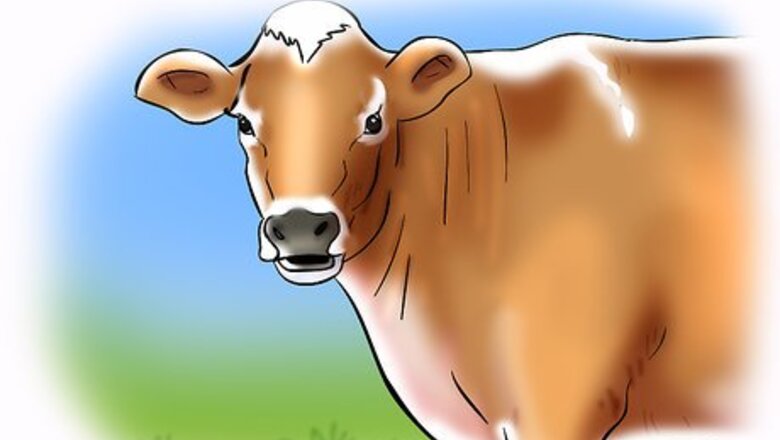
views
X
Research source
Estrus is actually a result of the release in estrogen from a maturing follicle in the cow's ovaries prior to ovulation. Secretions from the reproductive tract act as lubricant for breeding and help sperm travel to the uterus.
Below are the steps that describe the physiological steps of how estrus occurs in female bovines, and how to detect a cow or heifer that is in heat.
Steps
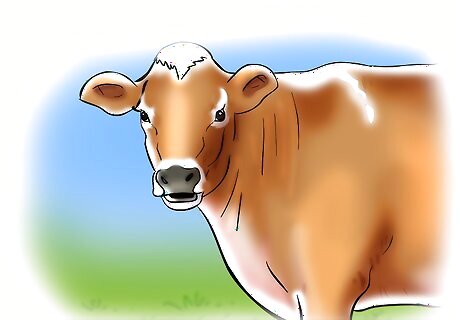
Know the physiological reproductive cycle of cattle. Cows and heifers typically go into heat or estrus every 17 to 24 days (average is 21 days). A bred cow or heifer will usually not go into heat until a few weeks after giving birth.
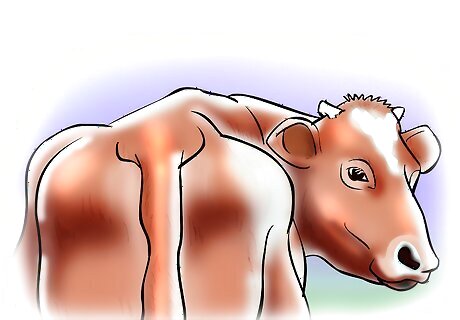
Know the behaviour changes of cows and heifers going into heat. Compare how a female in heat behaves differently than if she were not in heat.
Physiology of the Bovine Estrous Cycle

Day 0 - Standing heat. Increased levels of estrogen are produced by a maturing follicle in the cow's ovaries. Secretions along the reproductive tract allow for easier breeding and aid for sperm to travel through the uterus to the ovum. Standing heat usually lasts for 12 to 24 hours, after which ovulation occurs.
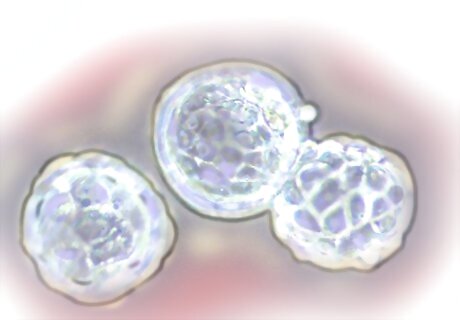
Ovulation. The mature follicle ruptures and the ovum travels through to the fallopian tube where it awaits the arrival of the sperm. Ovulation occurs in response to a surge of Luteinizing Hormone (LH) from the pituitary gland in the cow's brain. Ovulation occurs 12 hours after the cow goes out of heat.
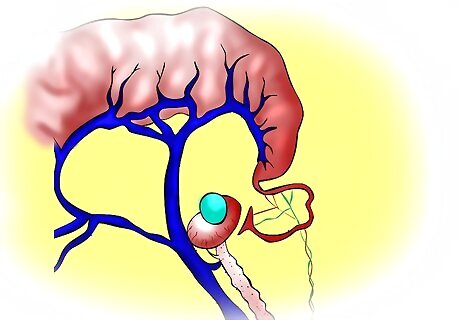
Days 1 and 2 - Alteration of cells that line the Follicle. These cells regenerate and grow to create the corpus luteum (CL) in the area where the mature (now dead) follicle had ruptured and release the ovum.
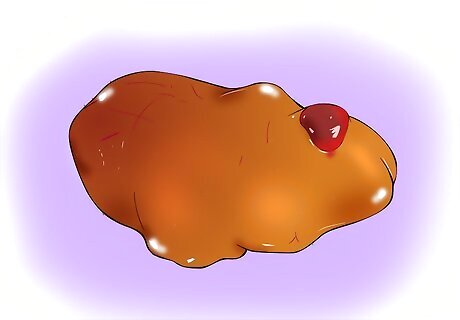
Days 2 to 5 - Growth of the Corpus Luteum. The growing CL produces high levels of progesterone which causes other follicles to regress and prevent from further maturation. During the early part of this phase, a portion of the lining over the caruncles (which are small protuberances on the inner uterine wall which the placenta attaches itself during the gestation period) becomes engorged with blood and bleeding from smaller capillaries may occur. Bloody discharge may be seen 2 or 3 days after the female has experienced estrus, which is caused by the sudden decrease in estrogen in her system. If you haven't seen the cow in heat, this is as good an indication as any that she had just been in heat a few days ago.
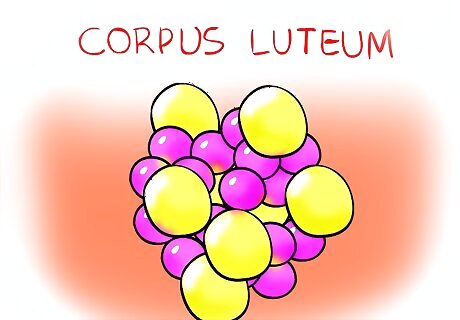
Days 5 to 16 - Continuation in Development of Corpus Luteum. The CL usually maxes out growth by the time days 15 or 16 arrive. This period is called Diestrus (or, "between estrus") because it is the longest phase of the estrous cycle. Progesterone secreted by the CL block any LH release from the pituitary gland, resulting in the ovaries being relatively inactive. No follicles are able to mature or ovulate. The cervix is closed up tightly and there are also no secretions from the reproductive tract during this time.
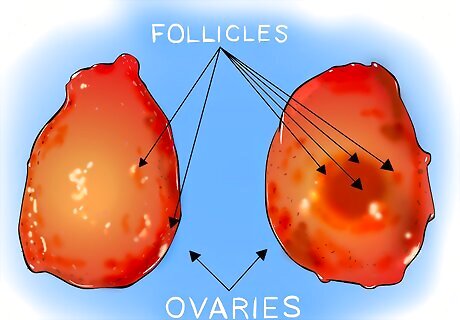
Days 16 to 18 - Follicles on the Ovaries begin growth again. Estrogen secretions stimulates the uterus to secrete prostaglandins, causing rapid regression of the CL.
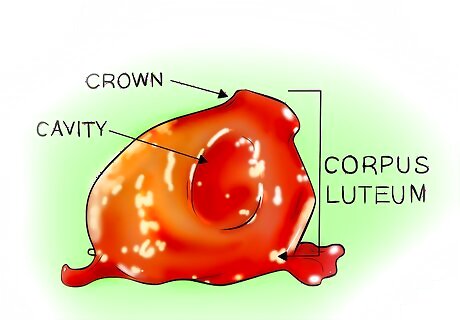
Days 18 and 19 - Corpus Luteum Becomes Non-functional. Very little progesterone is released, which means that progesterone and other reproductive hormones are no longer able to have any blocking effect on anything else. Several follicles on the ovaries begin to grow; one becomes dominant, secreting increasing levels of estrogen as it reaches maturity.
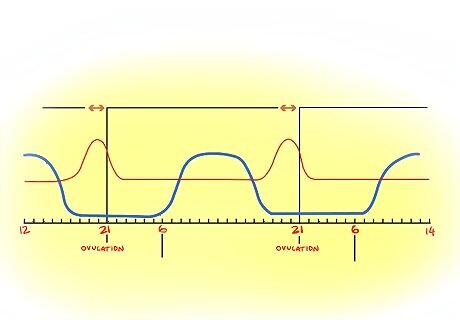
Days 19 and 20 - Heat again. An increase in estrogen and corresponding decrease in progesterone brings the cow back into heat again, starting the cycle back to 0.
Looking for Behavioral and Physical Signs of Estrus

Walk out to the pasture or corral where you are keeping your cows and/or heifers. The best time to observe any behaviours is in the morning and the evening.
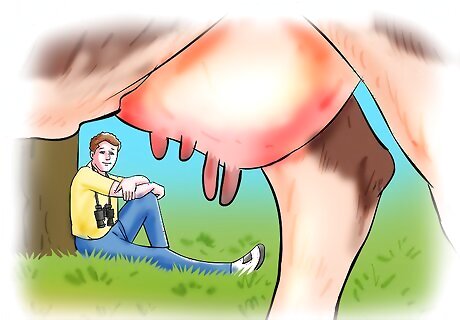
Find some place to sit where you can easily watch the behaviour of your cattle but at the same time, don't really attract the attention of your animals. Bring your binoculars and a notepad to do any recording of what you see.
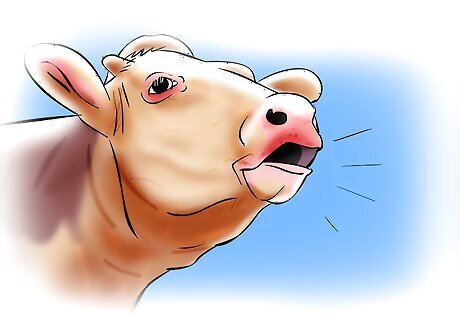
Look for behavioral signs if estrus: (Note that the herd is highly sensitive to when even one female is in heat!) She may be acting restless and mooing a lot She will be wandering around the pasture or corral in search of a mate She may travel thrice or four times as much as she does when she's not in heat Sniffing or nudging may occur in the vulva region between her and other cows More vigorous interaction may be observed between that female in heat and her herd-mates, from excessive licking to even fighting. Usually if you have a group of cows that are in heat at the same time, they will be sticking together, fighting and mounting each other. She may attempt to ride other cattle, and stand for them to mount her. Putting her chin on the back or rump of another cow to test whether that cow will stand for her may be seen. If the cow stands, she's also in heat. If she doesn't, and turns around to give her a good bunt with her head, she's not in heat. If there's a bull around, she will also mount the bull before she stands to let him mount and breed her. During her early heat period, she will often let other cows mount her before she lets the bull service her. During this time, before she lets him mount her, the bull will be sniffing and nudging her vulva region, and doing a Flehmen response (where he curls back his nose, raises his head in the air as high as it can go, smelling the pheromones she's emitting in her urine and vaginal secretions). He will also rest his chin on her rump or loins to test if she'll stand for him or not.
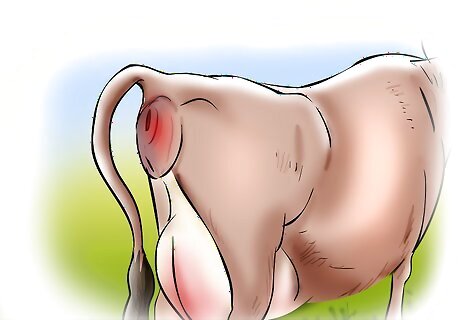
Also note any physical signs of estrus: Clear discharge from her vulva; the discharge would be so viscous it has the consistency of egg white. You will see it hanging from her vulva in a long string. Her tail may be slightly raised and off to one side. Her vulva will also look enlarged and swollen red. If she's in with other cattle, the hair over her rump, hipbones and tailhead will look ruffled. She may also have a bit of dirt or mud on the rear part of her sides from other cattle mounting her. This may not be as evident if they are out on a clean pasture with no mud patches to speak of. However, during springtime when she is shedding, there may be hair that has rubbed off from other animals mounting her, and she may have abrasions and raw areas over her tailhead and hips if she was mounted quite frequently. This usually happens when you have more than one bull in the herd and there was a bit of competition going on. If she was actually bred, she will hold her tail out and her back will be arched for several hours or even days. This is because of the vaginal irritation she experiences from the bull thrusting his penis in her. This physical sign will usually last for 24 hours or more, especially if she's been serviced repeatedly by more than one bull.
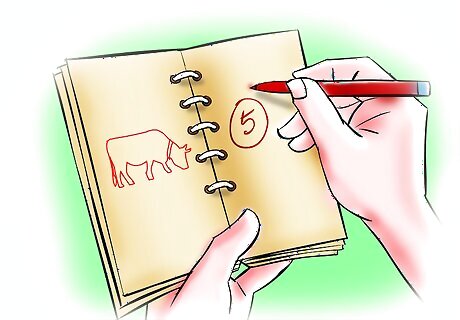
Record the tag number or name of the cow that is in heat or has been bred in your notebook.


















Comments
0 comment